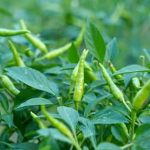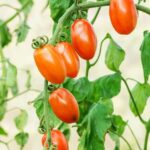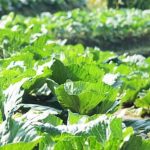Container gardening is a popular choice among urban gardeners looking to make the most of limited space. In this article, we will provide you with a comprehensive list of vegetables for container gardening to help you kickstart your own urban garden. Container gardening offers numerous benefits, from easy maintenance to the ability to control soil quality and drainage, making it an ideal option for those with small outdoor spaces or even just a balcony.
One of the main reasons why growing vegetables in containers has gained so much popularity is its versatility and accessibility. With the right containers and soil mix, you can grow a wide variety of vegetables right at home, regardless of your location. This method allows city dwellers to enjoy fresh produce without needing a traditional backyard garden. Plus, container gardening can be a fun and rewarding project for beginners and experienced gardeners alike.
When it comes to choosing the right containers for your vegetable garden, there are various options to consider, from traditional pots and planters to more innovative solutions like grow bags or hanging baskets. Selecting the appropriate size and material for your containers is crucial for the health and growth of your plants. Additionally, factors such as drainage holes, insulation, and portability should be taken into account when deciding on the best containers for your specific needs.
Choosing the Right Containers
When it comes to container gardening, one of the key factors to consider is choosing the right containers for your vegetables. There are various types of containers available that can cater to different needs and preferences. Some popular options include traditional clay pots, plastic containers, hanging baskets, and even repurposed items such as buckets or barrels. Each type of container has its own set of advantages and considerations when it comes to growing vegetables.
Factors to Consider
When selecting containers for your vegetable garden, there are a few factors to keep in mind. First and foremost, ensure that the containers have proper drainage holes at the bottom to prevent waterlogging, which can lead to root rot.
Additionally, consider the size of the container in relation to the mature size of the vegetable plant you intend to grow – larger plants will need bigger containers. The material of the container also plays a role in insulation and moisture retention, so choose accordingly based on your climate and location.
Choosing Containers for Specific Vegetables
Certain vegetables have specific requirements when it comes to container size and depth. For example, deep-rooted plants like tomatoes and peppers thrive in larger pots with ample vertical space for their roots to grow downward.
On the other hand, shallow-rooted crops like lettuce or radishes can do well in more compact containers. It is essential to match the container size and shape with the specific vegetable you plan on growing to optimize their growth and overall health throughout the growing season.
Selecting the Best Soil Mix
When it comes to container gardening, choosing the right soil mix is essential for the success of your vegetable plants. The soil in containers needs to provide proper drainage, aeration, and nutrients for the vegetables to thrive. A high-quality soil mix specifically formulated for container gardening can make a significant difference in the growth and health of your plants.
To create a well-draining and nutrient-rich soil mix for your container garden, consider using a combination of peat moss or coconut coir, perlite or vermiculite, and compost. Peat moss or coconut coir helps retain moisture in the soil without becoming waterlogged, while perlite or vermiculite improves drainage and aeration. Adding compost provides essential nutrients for the vegetables to grow strong and healthy.
When selecting a pre-packaged soil mix for your container garden, look for products labeled specifically for vegetables or containers. These mixes are typically designed to meet the unique needs of vegetables growing in confined spaces. Avoid using regular garden soil in containers as it tends to compact and suffocate plant roots. By investing in a quality soil mix tailored for container gardening, you can set your vegetables up for success from the start.
In addition to using a proper soil mix, it’s important to monitor the moisture levels of your container garden regularly. Containers tend to dry out more quickly than traditional garden beds, so be sure to water your vegetables consistently and check if they need watering by sticking your finger into the soil. With the right soil mix and proper care, you can enjoy a bountiful harvest of homegrown vegetables right on your patio or balcony.
Essential Tools and Equipment
When it comes to successfully maintaining a container garden, having the right tools and equipment is essential. Whether you are a seasoned gardener or just starting out, there are a few key items that will help you care for your vegetable plants effectively. Here is a list of some essential tools and equipment that every container gardener should have:
- Hand trowel or small shovel: Perfect for scooping soil, planting seeds, and transferring seedlings into containers.
- Gloves: Protect your hands from dirt, scratches, and thorns while working in the garden.
- Pruning shears: Essential for trimming herbs, pruning plants, and harvesting vegetables.
- Watering can or hose with a nozzle: Ensure your vegetable plants receive adequate water to thrive.
- Fertilizer or compost: Provide essential nutrients to your plants for healthy growth and abundant harvests.
Taking care of your tools is just as important as using them properly in container gardening. Regular maintenance will ensure their longevity and efficiency. Clean your tools after each use to prevent the spread of diseases between plants. Store them in a dry place to avoid rusting and damage. Additionally, keep your gardening shears sharp for clean cuts that promote plant health.
Investing in quality tools and equipment will make your container gardening experience more enjoyable and productive. Having the right supplies on hand will help you address any challenges that come up during the growing season. With these essential tools at your disposal, you’ll be well-equipped to nurture a thriving container garden full of delicious homegrown vegetables.
Best Vegetables for Container Gardening
When it comes to container gardening, the choice of vegetables you plant can make a significant impact on the success and productivity of your garden. To help you make informed decisions, below is a list of vegetables that are well-suited for growing in containers:
- Tomatoes: A popular choice among container gardeners, tomatoes come in a variety of sizes and colors, making them versatile and easy to care for in containers.
- Peppers: Whether you prefer sweet bell peppers or spicy chili peppers, both varieties do exceptionally well when grown in pots or planters.
- Herbs: From basil and parsley to mint and rosemary, herbs thrive in containers and are perfect for adding flavor to your culinary creations.
- Carrots: With their slender shape, carrots are ideal for deep containers that allow room for their roots to grow long and straight.
- Lettuce: Perfect for small spaces, lettuce varieties like romaine and butterhead can be grown easily in pots and provide a fresh harvest for salads all season long.
Container gardening allows urban gardeners with limited space to enjoy the benefits of growing their own produce. With proper care and attention, these vegetables can flourish in containers on balconies, patios, or windowsills. Remember to consider factors like sunlight exposure, watering needs, and growth habits when selecting vegetables for your container garden.
In addition to the above list of vegetables suitable for container gardening, other options include radishes, beans, zucchini, and even strawberries. Experimenting with different vegetables will not only diversify your harvest but also add visual interest to your container garden. Whether you’re a beginner or experienced gardener, the joy of watching your homegrown vegetables thrive in containers is truly rewarding.
Planting and Maintenance Tips
Proper Planting Techniques
When it comes to planting your vegetables in containers, it is essential to follow proper techniques to ensure the best growth and yield. Start by selecting the right size container for each type of vegetable you plan to grow. Some vegetables require deeper containers for their roots to thrive, while others can do well in shallower pots. Make sure to place a layer of stones or pebbles at the bottom of your container to assist with drainage, preventing waterlogging.
After selecting the appropriate container, fill it with a high-quality soil mix that is rich in nutrients and provides good drainage. Create a small well in the soil for each seed or seedling before planting. Follow the recommended spacing guidelines for each vegetable variety to prevent overcrowding and competition for resources. Once planted, water your container garden regularly and monitor the moisture levels closely, as containers tend to dry out faster than traditional garden beds.
Maintenance Practices
Regular maintenance is key to ensuring the success of your container garden. Keep an eye on your plants for any signs of pests, diseases, or nutrient deficiencies, and take prompt action if needed. Depending on the type of vegetables you are growing, you may need to fertilize them periodically with a balanced fertilizer to promote healthy growth and fruit development.
Pruning and harvesting are also important aspects of maintaining your container garden. Remove any yellowing or diseased leaves promptly to prevent the spread of diseases among your plants. When it comes time to harvest your vegetables, use clean tools and handle them gently to avoid damaging the plant or fruit. By staying on top of maintenance tasks, you can help your container garden thrive throughout the growing season.
Troubleshooting Common Issues
Despite your best efforts, you may encounter challenges while caring for your vegetable container garden. If you notice wilting leaves, yellowing foliage, or stunted growth in your plants, these could be signs of overwatering, underwatering, nutrient deficiencies, or pest infestations. Conduct regular inspections of your plants and address any issues promptly using organic pest control methods or foliar feedings with compost tea.
To maintain a healthy balance in your container garden ecosystem, consider companion planting with herbs or flowers that repel pests naturally. Additionally, rotating crops between different containers each season can help prevent soil depletion and reduce the risk of recurring pests and diseases. By troubleshooting common issues proactively and implementing sustainable gardening practices, you can enjoy a bountiful harvest from your vegetable container garden year after year.
Common Pests and Diseases
Container gardening offers numerous benefits, such as flexibility in the space you can utilize, easier maintenance, and the ability to control growing conditions for your plants. However, just like traditional garden beds, container gardens are not immune to pests and diseases that can affect the health and growth of your vegetables. Identifying and addressing these issues promptly is essential in ensuring a successful container gardening experience.
One of the common pests that may trouble your container garden is aphids. These small insects feed on plant sap and can quickly multiply if not controlled. Signs of aphid infestation include curled leaves, stunted growth, and sticky honeydew residue on the plants. To combat aphids in your container garden, consider using insecticidal soap or a strong spray of water to dislodge them from the plants.
Another frequent issue in container gardening is powdery mildew, a fungal disease that appears as white powdery spots on leaves and stems. This disease thrives in warm temperatures with high humidity levels. To prevent powdery mildew in your vegetable containers, ensure proper air circulation around your plants by spacing them adequately and avoiding overhead watering. Neem oil or sulfur-based fungicides can also help manage powdery mildew effectively.
| Pest/Disease | Symptoms | Treatment |
|---|---|---|
| Aphids | Curled leaves, stunted growth, sticky honeydew residue | Insecticidal soap or strong water spray |
| Powdery Mildew | White powdery spots on leaves and stems | Neem oil or sulfur-based fungicides; improve air circulation |
By staying vigilant and practicing good gardening habits like regular inspections, proper watering techniques, and maintaining overall plant health through adequate sunlight exposure and nutrient-rich soil mixtures, you can minimize the risk of pests and diseases affecting your container-grown vegetables. Remember that prevention is often key when it comes to maintaining a thriving container garden filled with healthy plants ready for harvest.
Harvesting and Enjoying Your Homegrown Vegetables
When it comes to container gardening, the joy of harvesting and enjoying your homegrown vegetables is a truly rewarding experience. Not only do you get to savor the flavors of freshly picked produce, but you also have the satisfaction of knowing that you grew it yourself. Whether you’re harvesting vibrant cherry tomatoes from your patio or crisp lettuce leaves from your balcony, container gardening allows you to enjoy a bountiful harvest even in limited spaces.
One of the best parts about harvesting your homegrown vegetables is that you can pick them at their peak ripeness for the best flavor and nutrition. For example, tomatoes taste sweeter when allowed to fully ripen on the vine, while herbs like basil are most flavorful just before they start to flower. By regularly checking your container garden for ripe veggies and herbs, you can ensure that each harvest is bursting with freshness.
To make the most out of your homegrown vegetables, consider incorporating them into delicious recipes and meal ideas. Freshly picked veggies like bell peppers, cucumbers, and zucchini can be used in salads, stir-fries, pasta dishes, and more.
Herbs such as mint, parsley, and cilantro can add a burst of flavor to sauces, marinades, and desserts. Experimenting with different combinations of vegetables and herbs from your container garden will not only elevate your dishes but also inspire you to get creative in the kitchen.
| Vegetable | Recipe Idea |
|---|---|
| Cherry Tomatoes | Caprese Salad with Fresh Basil |
| Bell Peppers | Stuffed Bell Peppers with Quinoa and Black Beans |
| Cucumbers | Cucumber Mint Cooler Drink |
By incorporating your homegrown vegetables into your cooking routine, you’ll not only enjoy flavorful meals but also appreciate the effort and care that goes into growing your own food. So don’t wait any longer – start planning your next harvest from your container garden today.
Conclusion
Container gardening provides a rewarding experience for urban gardeners looking to grow their own fresh vegetables in limited spaces. The convenience, flexibility, and accessibility of container gardening make it an appealing choice for those with small yards, balconies, or patios. By carefully selecting the right containers, soil mix, tools, and vegetables, anyone can create a thriving container garden right at home.
When it comes to choosing vegetables for container gardening, there is a wide array of options available. From cherry tomatoes and peppers to leafy greens like lettuce and spinach, the possibilities are endless. Consider factors such as space constraints and sunlight exposure when deciding on which vegetables to grow in your containers. Some popular choices that are well-suited for container gardening include carrots, radishes, cucumbers, and herbs like basil and cilantro.
In conclusion, container gardening is a fantastic way to enjoy the benefits of homegrown produce without requiring a traditional garden plot. The joy of harvesting your own vegetables and incorporating them into delicious meals is truly unparalleled. Whether you are a beginner or an experienced gardener, container gardening is a versatile and fulfilling hobby that can be enjoyed by all.
So why wait? Get started on your container gardening journey today and start reaping the rewards of growing your own list of vegetables for container gardening.
Frequently Asked Questions
What Vegetables Are Good for Container Gardening?
Vegetables that are good for container gardening include tomatoes, peppers, radishes, lettuce, spinach, carrots, beans, and herbs like basil and parsley. These vegetables thrive in containers if provided with proper sunlight and well-draining soil.
What Are the Top 10 Vegetables Grown in Containers?
The top 10 vegetables grown in containers are tomatoes, peppers, cucumbers, zucchini, lettuce, spinach, green beans, radishes, carrots, and herbs like basil and mint. These veggies are popular choices for container gardening due to their adaptability.
What Vegetables Can You Grow Together in a Container?
You can grow a variety of vegetables together in a container as long as they have similar growing requirements. For example, you can plant tomatoes with basil or peppers with onions. Just make sure the plants get enough sunlight and space to thrive without competing too much for resources.

If you’re looking to get into vegetable gardening, or are just looking for some tips on how to make your current garden better, then you’ve come to the right place! My name is Ethel and I have been gardening for years. In this blog, I’m going to share with you some of my best tips on how to create a successful vegetable garden.





